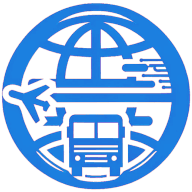3 Benefits and Drawbacks of Using Drones in Transportation
The use of drones in transportation is rapidly reshaping the landscape of urban mobility and delivery services. From transforming last-mile delivery to redefining urban transportation, drones offer exciting possibilities that are capturing the attention of industry leaders and policymakers alike. However, as experts in the field point out, the integration of drone technology in transportation also brings significant challenges, particularly in terms of safety and regulation.
- Drones Transform Last-Mile Delivery
- Urban Mobility Redefined by Drone Technology
- Balancing Drone Potential with Safety Concerns
Drones Transform Last-Mile Delivery
Looking at drones for transportation, I'm optimistic but pragmatic. The technology represents a fascinating evolution in last-mile delivery with tremendous potential to transform how we approach fulfillment.
The benefits are compelling. Drones can dramatically reduce delivery times in congested urban areas and reach remote locations that traditional vehicles struggle with. For eCommerce businesses facing increasingly demanding customer expectations, this speed advantage is significant. We're also seeing promising environmental benefits through reduced carbon emissions compared to conventional delivery vehicles.
However, the logistics industry needs to address several challenges before widespread adoption. Regulatory frameworks are still evolving, with complex airspace restrictions and privacy concerns. Battery limitations currently restrict payload capacity and range. And the economics remain challenging – the infrastructure investment required for drone operations is substantial.
What's particularly interesting from our perspective at Fulfill is how this technology might reshape the 3PL ecosystem. Our partners are exploring hybrid models where drones complement traditional fulfillment networks rather than replace them. This approach allows businesses to leverage drones' speed advantages while maintaining the reliability and scale of established logistics infrastructure.
I've visited several fulfillment centers testing drone capabilities, and the technology is advancing rapidly. That said, I believe we're still 3-5 years away from seeing meaningful commercial deployment at scale.
The most successful implementations will likely start with specialized use cases – time-sensitive deliveries, medical supplies, or servicing hard-to-reach areas. From there, we'll see gradual expansion as costs decrease and operational expertise grows.
For eCommerce companies, my advice is to stay informed but focus primarily on optimizing your existing fulfillment strategy. The businesses that will benefit most from drone delivery in the near term are those with already efficient operations who can strategically layer in new technologies as they mature.
Urban Mobility Redefined by Drone Technology
One time, I beat Mexico City's rush hour by air—and still arrived after the guy who took a drone. This might be a common story not far from happening often.
Sounds unbelievable, right? But I saw it happen while researching alternatives for my helicopter charter business. A drone prototype transporting medical supplies landed across town in under 7 minutes. Meanwhile, my Bell 206 needed nearly 12 just to clear the air corridor over Polanco. That moment rewired how I thought about urban mobility.
I've built businesses around ground transportation in one of the most gridlocked cities in the world. Later, I expanded to aerial services. But no matter how fast your ride, the city's limitations catch up. That's where drones break the mold.
Drones promise:
- Hyper-local efficiency — no stoplights, no traffic, just straight-line delivery
- Emergency responsiveness — imagine heart medications in Iztapalapa, not in 40 minutes, but in 5
- Cost reduction — eventually, drones could run cheaper than maintaining a luxury sedan fleet
But there are serious limitations:
- Airspace restrictions in Mexico City are some of the most complex in the region. Commercial drone flight near Benito Juárez or Santa Lucía? Practically impossible for now.
- Public trust is fragile. In wealthier areas, drones mean innovation. In others, they might feel like surveillance.
- Noise and privacy — if one drone is efficient, imagine hundreds overhead. It's not just tech—it's livability.
Still, I'm convinced drones will reshape how we move, deliver, and connect. My role now is to integrate them smartly. Not to replace the chauffeur or the helicopter, but to unlock a new layer in the transportation stack.
Balancing Drone Potential with Safety Concerns
I believe the use of drones for transportation purposes has significant potential, particularly in terms of efficiency and reducing congestion. For example, drones could revolutionize last-mile delivery for packages, allowing items to be transported quickly and directly to customers, bypassing traffic and roadblocks. This could dramatically reduce delivery times and costs.
On the other hand, there are some drawbacks to consider. One major concern is safety—drones could pose a risk to people and property, especially if there's a malfunction. Another issue is regulation and infrastructure; creating a framework for drone air traffic and ensuring they operate in a way that's safe and secure will take time.
Overall, while I see drones as a promising innovation, I think their widespread adoption will require careful planning and strict regulations to address these challenges.




